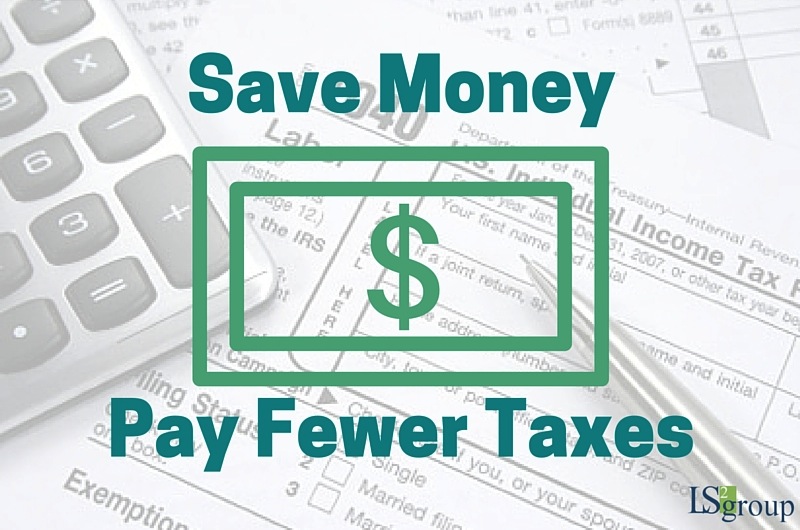Saving Money and Paying Fewer Taxes
Mar 08

At this time of the year, most people are either really happy or quite depressed to file their taxes. Regardless of your situation, this is a good time for a financial check-up.
For those who wish to pay less in taxes next year, here are a few simple steps to make that happen:
- Make sure you are contributing as much as you can to your 401k plan and IRA. For 2016, the IRS maximum contribution to your 401k plan is $18,000, or $1,500 per month. If you turn 50 during 2016 or are already 50 or older, you can contribute an additional $6,000 for a total of $24,000 during 2016. Contributing to a retirement plan with pretax dollars means you are saving for your retirement, and reducing your taxable income during the years you contribute. You can contribute after-tax dollars through your paycheck as well. This is known as a Roth retirement plan contribution. Although it will not reduce your taxable income, it will help boost your retirement plan balance, and save taxes on the amount you withdraw after you retire. Be sure to only contribute what you can comfortably afford as you cannot withdraw funds from your 401k without penalties and interest until you are 59½ years of age.
- If you contribute the IRS maximum allowable amount to your company retirement plan, you may be able to contribute after-tax dollars to a Roth IRA. If you are under 50 in 2016, your maximum amount is $5,500. If you are 50 or older, your limit is $6,500. While the Roth IRA contribution will not save you any taxes in 2016, your payout once you retire will not be taxed and those savings should be significant.
- Be sure to meet with a tax professional during the late summer or early fall. Talk to him or her about what you are currently earning, and what expenses you expect in 2016. He or she can estimate how much of a refund or payment you can expect, and how much you can contribute to a Roth IRA. If you are expected to pay taxes at year-end, you have enough time to adjust your remaining 2016 paychecks for more taxes withheld, thus lessening your burden in one big check to the IRS. Alternatively, you may be able to make some charitable donations during the rest of 2016 that would minimize the amount you would need to pay to the IRS. In other words, if you have to write a check, would you rather write it to the charity of your choice or the IRS?
Back to saving for retirement, there are advantages and disadvantages to whether you contribute pre-tax or after tax. Click on the ADP chart for a discussion of each. In addition, it is always best to consult with a professional financial advisor on which type of contribution is right for you.
Make sure you do not overlook putting money into a savings or money market account with each paycheck. Although there is no tax savings benefit to this, accumulating savings can help you be prepared for unexpected expenses like a big car repair bill, or a security deposit if you are moving to a new apartment. Savings provide financial security. The ideal savings balance is three to six months of your take home pay. If you have no savings account balance, make it a goal to have one month of take-home pay saved by the end of 2016. Happy saving!
